Crimsoneyed rosemallow (
Hibiscus moscheutos)
has a large native range in the southern and eastern United States and parts of the Midwest. It’s a prolific bloomer throughout the summer, with large, sugar-white petals and a crimson center. Autumn is a great time to collect seeds for easy propagation or establish it as a transplant in a wet area of the garden. It tolerates saturated soils, regular inundation of up to 3 feet and brackish water, and is a very showy specimen for wetland gardens. It is right at home in a rain garden or swale, or at a pond edge, where it will attract native bees and hummingbirds.
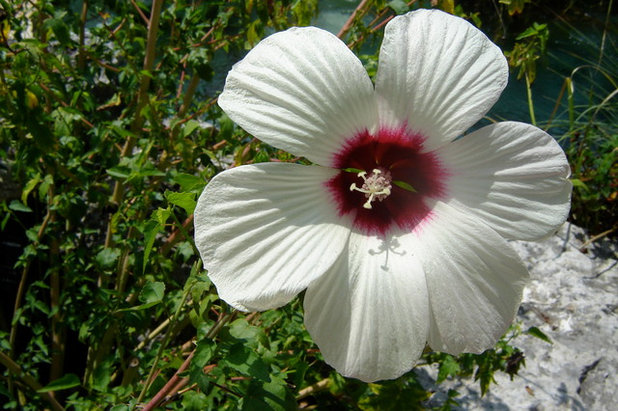 Photo by Andreanna Moya Photography
Photo by Andreanna Moya Photography
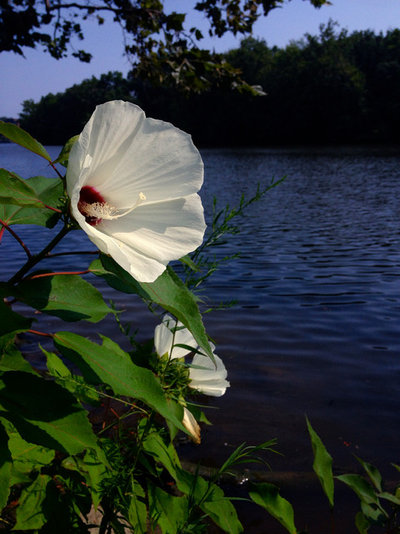 Botanical name: Hibiscus moscheutosCommon names:
Botanical name: Hibiscus moscheutosCommon names: Swamp rose mallow (also the common name for the related
Hibiscus grandiflorus), hardy hibiscus, crimsoneyed rosemallow
Origin: Native to the southeastern U.S., eastern U.S. and parts of the Midwest
Where it will grow: Hardy to -30 degrees Fahrenheit (USDA zones 4 to 9; find your zone)
Water requirement: Medium to high
Light requirement: Full sun
Soil requirement: Prefers moist, rich soil
Mature size: 3 to 7 feet tall and 3 to 4 feet wide
Benefits and tolerances: Extended bloom time from May to September; tolerates inundated, wet soils; tolerates brackish water and tidal marshes
Seasonal interest: Large, showy flowers with a maroon center bloom in summer
When to plant: Transplant in fall; collect seeds in autumn for spring planting
Photo by Fritz Flohr Reynolds
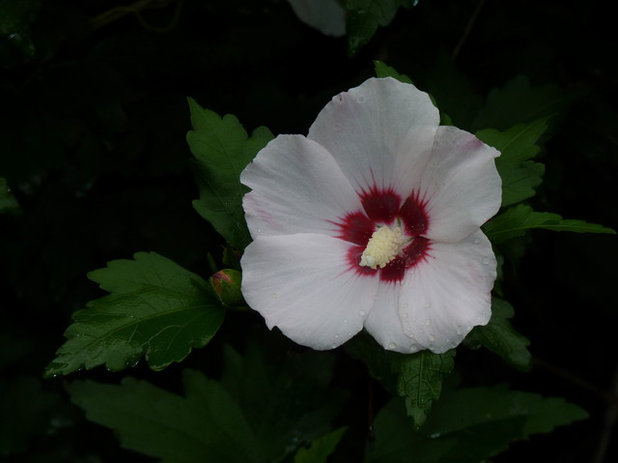 Distinguishing traits.
Distinguishing traits. Crimsoneyed rosemallow is an herbaceous perennial wetland plant that forms large colonies. Each plant has several erect stems with large, serrated leaves. The flowers can range from white to purple to pink in the wild, with a splash of deep maroon in the center. Individual flowers can be as wide as 8 inches, with some cultivars growing as large as a dinner plate. Individual flowers are short-lived, but the plant blooms continuously throughout the summer.
Photo by Dendroica cerulea
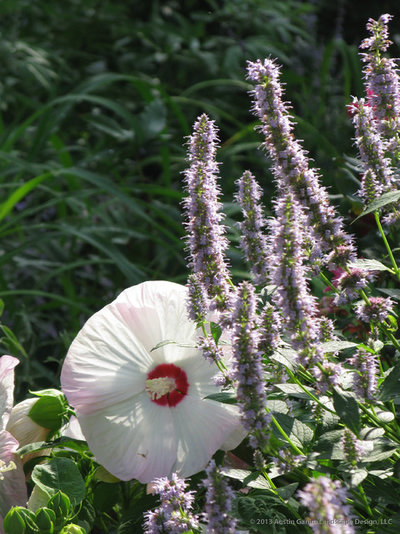
Austin Ganim Landscape Design, LLC
How to use it. An obligatory wetland species, crimsoneyed rose mallow is perfect for a rain garden or a vegetated swale with frequently inundated soil. Its natural habitat is in wet depressions of prairies and along the margins of wetlands in full sun. The large flowers and coarse-textured foliage make native hibiscus a focal point in a mixed wildflower planting. Pair it with smaller wildflowers and native wetland sedges to let the large flowers shine as the main attraction of a rain garden.
Shown: Hibiscus moscheutos ‘Luna Pink Swirl’ and
Agastache ‘Blue Fortune’
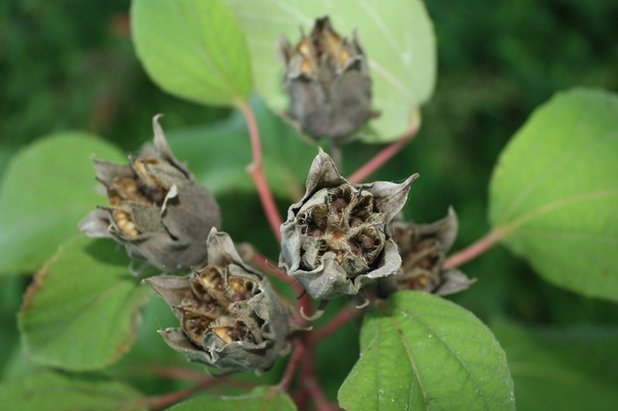 Planting notes.
Planting notes. Crimsoneyed rosemallow can be easily grown from seed. Before you collect seeds, the seed pods must be fully mature (in early autumn) — they will turn from green to brown and split so that they’re slightly open. Ask your friends and neighbors if you can collect seeds from their gardens. Collect the pods and remove the outer husk to bring clean seeds inside for storage. As with most perennial wildflowers, crimsoneyed rosemallow seeds need stratification — a cold period — for successful germination. Store the seeds in a brown paper bag in your fridge until they’re ready to be sown in spring. An easy way to encourage the plant to reseed itself is to sprinkle the seeds in an area where you want the plant to grow. This is not as reliable as starting seeds indoors, because birds may eat the seeds or the seeds may drift to other areas over winter and germinate in unintended spots.
Autumn is a great time to establish nursery-bought herbaceous perennials in the landscape. As with woody plants, herbaceous perennial transplants will establish a dense and deep root system in autumn and be ready for a spring growth spurt. Protect your newly transplanted crimsoneyed rosemallow from winter damage by mulching the root ball heavily with autumn leaves. Pull back the matted leaves in spring when the soil temperatures are consistently above 55 degrees.
Photo by Michael Gras, M.Ed.
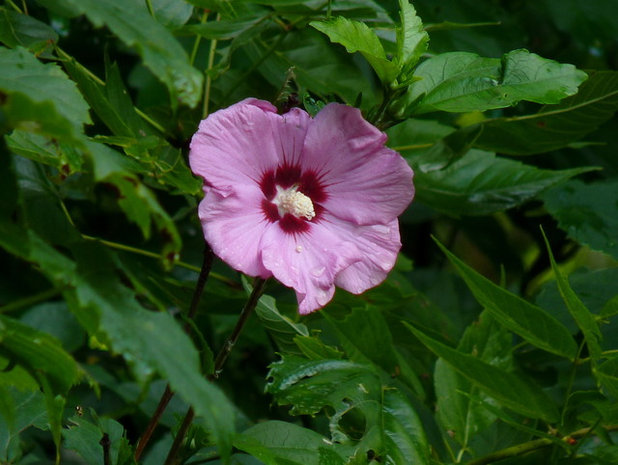 Wildlife value.
Wildlife value. Bumblebees and other long-tongued bees, such as carpenter bees and the rose-mallow bee, feed on
Hibiscus moscheutos. The rose-mallow bee (
Ptilothrix bombiformis)
is a specialist pollinator that mostly feeds on native hibiscus species. Other U.S. native hibiscus species include:
- Hibiscus coccineus (swamp hibiscus), zones 6 to 9; deep red flowers
- Hibiscus lasiocarpos (hairy rose mallow), zones 5 to 9; has a shorter stature than crimsoneyed rosemallow, and the flowers are white with a maroon center
- Hibiscus grandiflorus (swamp rose mallow), zones 7 to 10; a true Southern native with light pink flowers that can grow to an impressive 10 feet in height; has some of the largest flowers of any native U.S. plant, at 10 inches across
Photo by Dendroica cerulea





